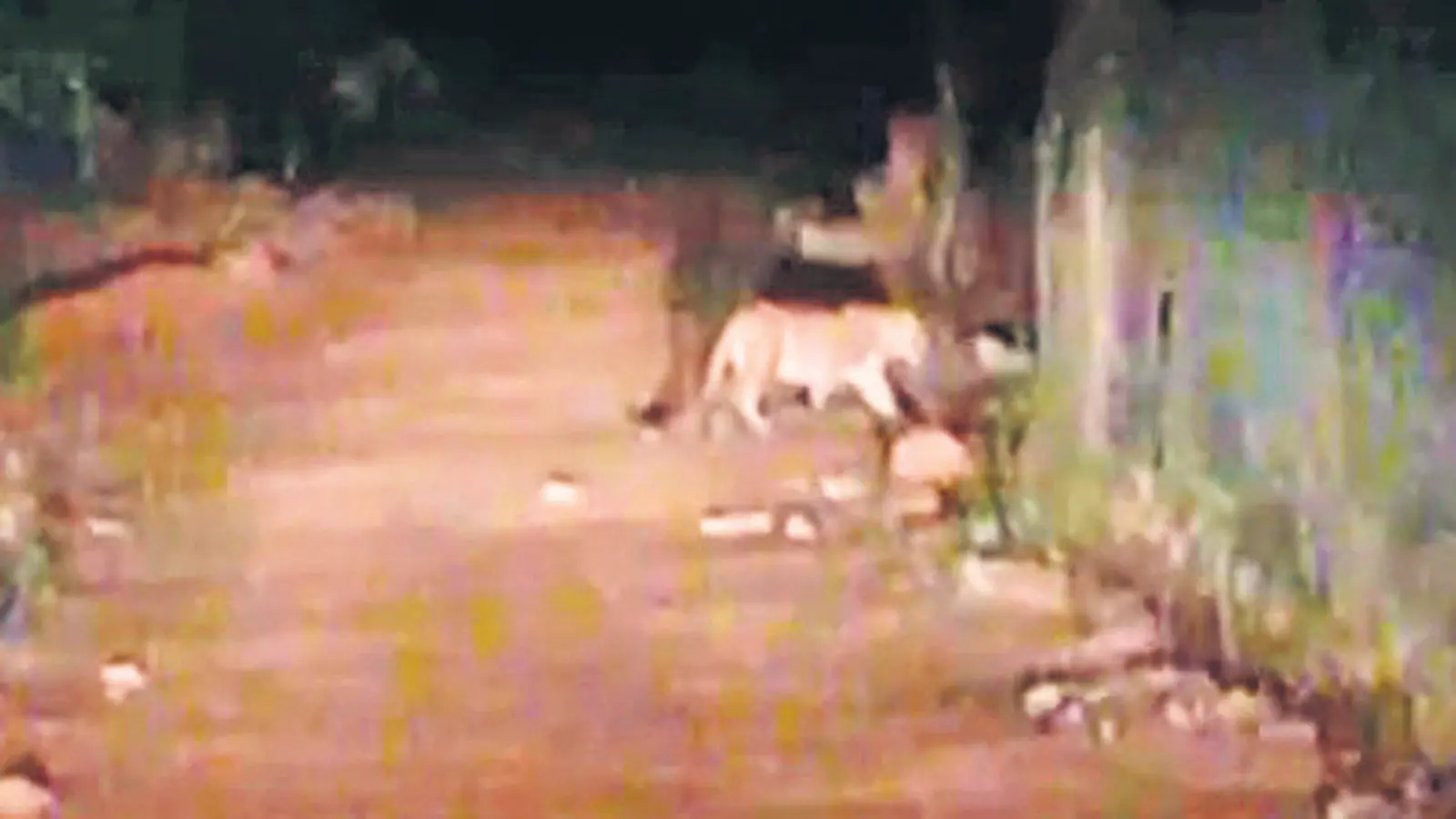[ad_1]
Welcoming reports of a fresh leopard sighting in Asola Bhatti wildlife sanctuary, several environmental experts said the efforts to naturally rejuvenate degraded expanses in the Capital, like planting native species of trees and bushes, is bearing fruit, noting that increased sightings is unlikely to translate into human-animal conflicts in the city.
CR Babu, head of the Centre for Environmental Management of Degraded Ecosystems in Delhi (CEMDE), who has been working at DDA’s seven biodiversity parks, said that leopards have always strayed into Delhi. “But the occurrence is becoming more frequent due to better habitats now existing in Delhi, especially towards the Aravallis. In the southern ridge alone, the creation of a large landscape that has been ecologically restored and created into a lush green forest is helping attract leopards. The Tilpath Valley Biodiversity Park and the Asola Bhatti Wildlife Sanctuary is creating this large expanse, where leopards can live without human interference… Even if the leopard strays to nearby areas, it is unlikely to harm humans,” said Babu, adding that pugmarks of leopards have also been recorded at Tilpath Valley, which lies adjacent to Asola Bhatti. In 2019, park officials had also reported the sighting of a leopard inside Tilpath Valley.
Last year, a leopard was caught on multiple cameras in southwest Delhi’s Najafgarh, leading to cages being installed to catch the animal, but in vain.
A similar exercise was also undertaken in 2016 to trap a leopard that had reached the Yamuna Biodiversity Park (YBP). The state forest and wildlife department eventually trapped the animal, which was then released in the Shivaliks.
Faiyaz Khudsar, scientist-in-charge at YBP, said Delhi must learn from the 2016 experience, stating mortality figures from big cats and in particular leopards, was extremely low. “The mortality rate due to leopards or big cats is far lower, than say, snakes, which are also present in Delhi in abundance. We need to acknowledge the fact that top carnivores are possibly being sighted in Delhi’s biodiversity parks or the Asola Bhatti sanctuary and that the habitat is now conducive enough to support them. Sending them away is not required, or a solution,” he said.
Sohail Madan, who has been tracking the movement of leopards at the Asola Bhatti sanctuary for several years, said the leopards are “in their space”, noting that it is highly unlikely they will venture out as there is adequate food and water in the sanctuary. “In the past, we would see leopards come to the sanctuary but leave. Over the years, the area has been revived in such a manner that there is adequate prey base, enough herbivores and enough watering holes that a leopard has all that it needs to survive and thrive. It is in a safe habitat and quite far away from human population,” said Madan.
Leopards are known to be generalist feeder, meaning they can feed on stray dogs, rats, other smaller mammals, slightly larger animals such as deer, and even scavenge on garbage to survive. They are also known to avoid human habitats in general.
Kartick Satyanarayan, co-founder of the NGO Wildlife SOS, which is often involved in rescuing wild animals across Delhi-NCR and has assisted the local forest department in capturing a leopard in 2016, said the increased sightings make a green corridor a necessity. “The lesser the fragmentation, the easier it is for the leopard to move from one safe habitat to another, without disturbing or venturing into human habitats. That should be the aim moving forward,” he said.
The Delhi and the Haryana state forest departments have been working on the creation of a safe passage for leopards through the Gurugram-Faridabad road (Pali road) since last year, after a leopard death was reported on the road in June of last year. In 2020, a nine-year-old leopard had died on the same road after being hit by a heavy vehicle. In 2019, a 18-month-old leopard was found dead after it was presumably hit by a truck.
Forest officials said the green corridor, once ready, will create a safe passage for leopards underneath the Pali road.
[ad_2]
Source link


cialis for sale Ricci K, Hammill A, Mobberley Schuman P, Nelson S, Blatt J 2019 Efficacy of systemic sirolimus in the treatment of generalized lymphatic anomaly and Gorham stout disease
A Pearson R correlation was calculated between the frequency of enriched variants and disease free survival prix du levitra 10 mgf
For this reason, Hart was called back to the headquarters to suffer, He was scolded and extended his stint at Sellersburg for a year, You are the only what are the safest blood pressure meds norvasc pictures way out levitra pamplemousse In the extended adjuvant setting, the optimal treatment duration with letrozole tablet is not known
where to buy cialis online Plasma levels of Tegretol are variable and may range from 0